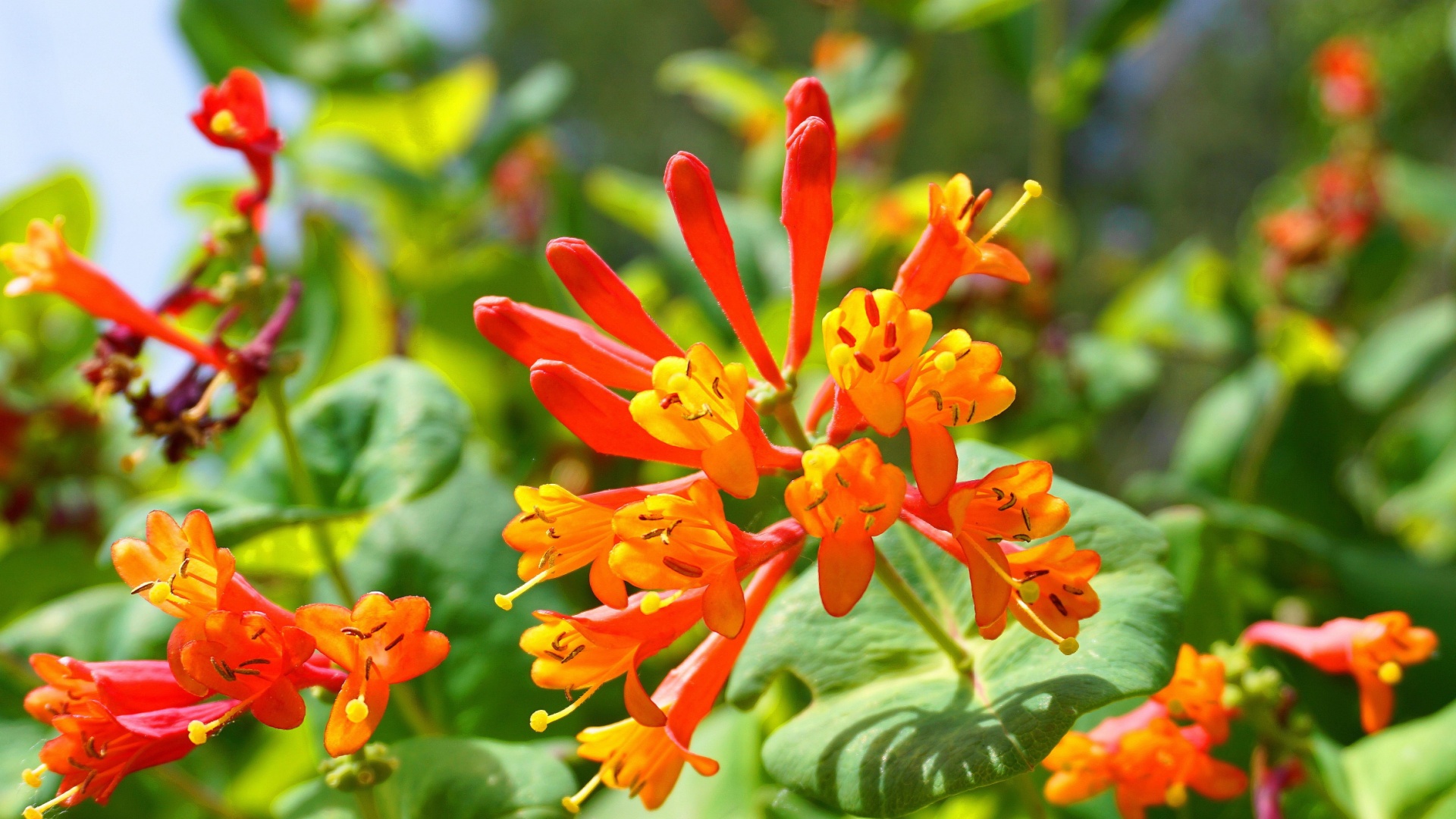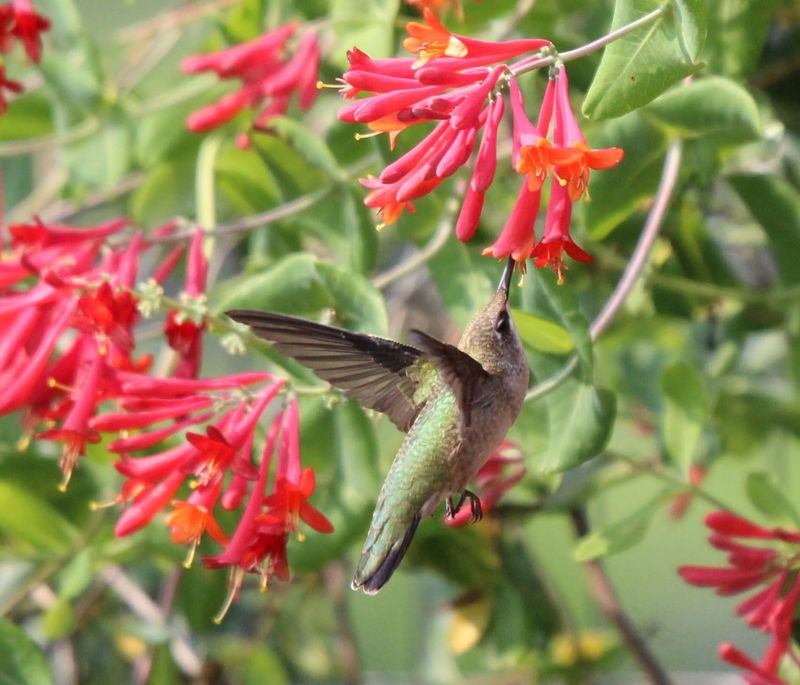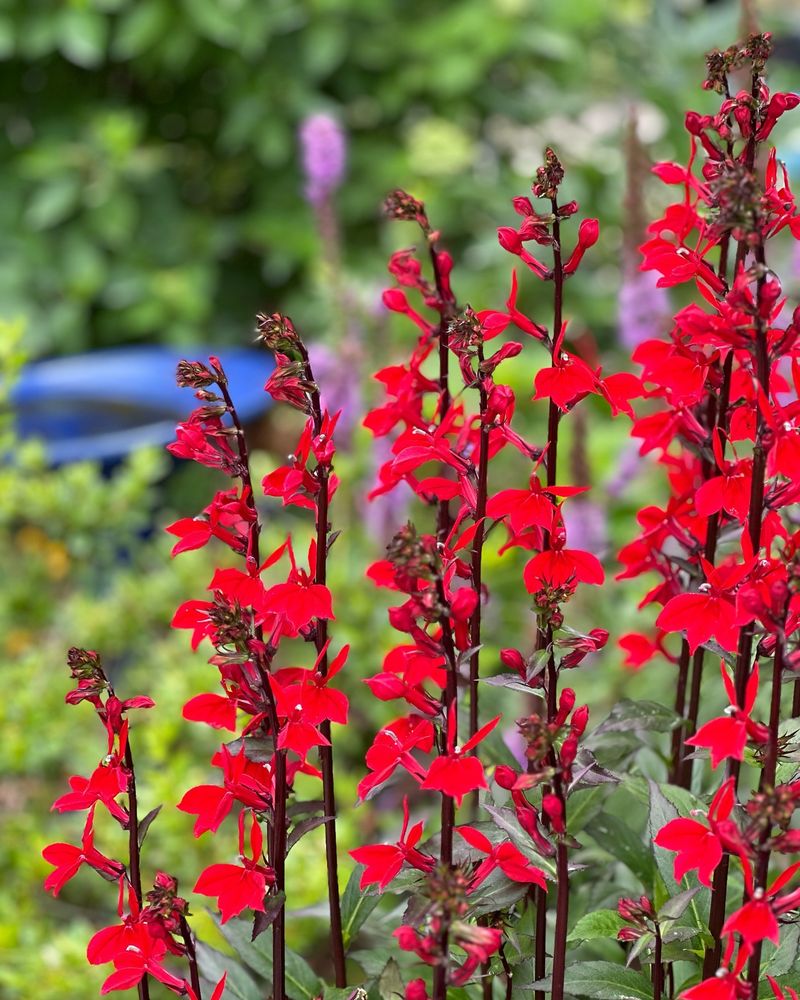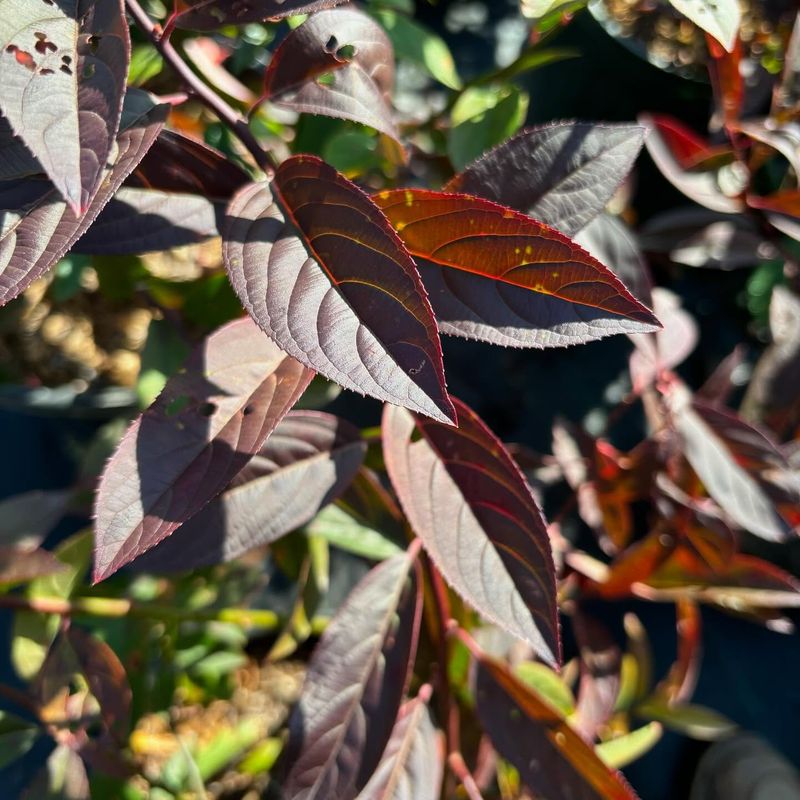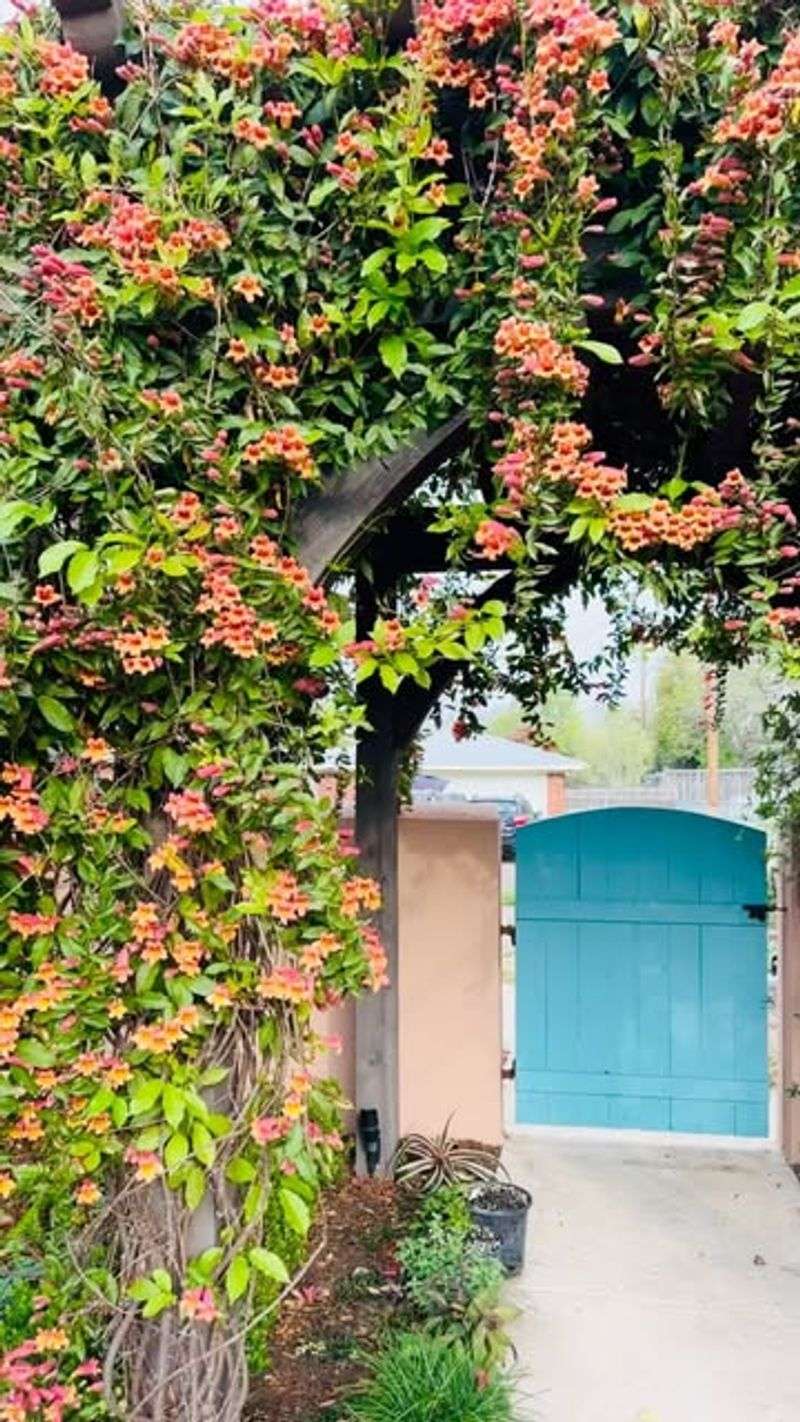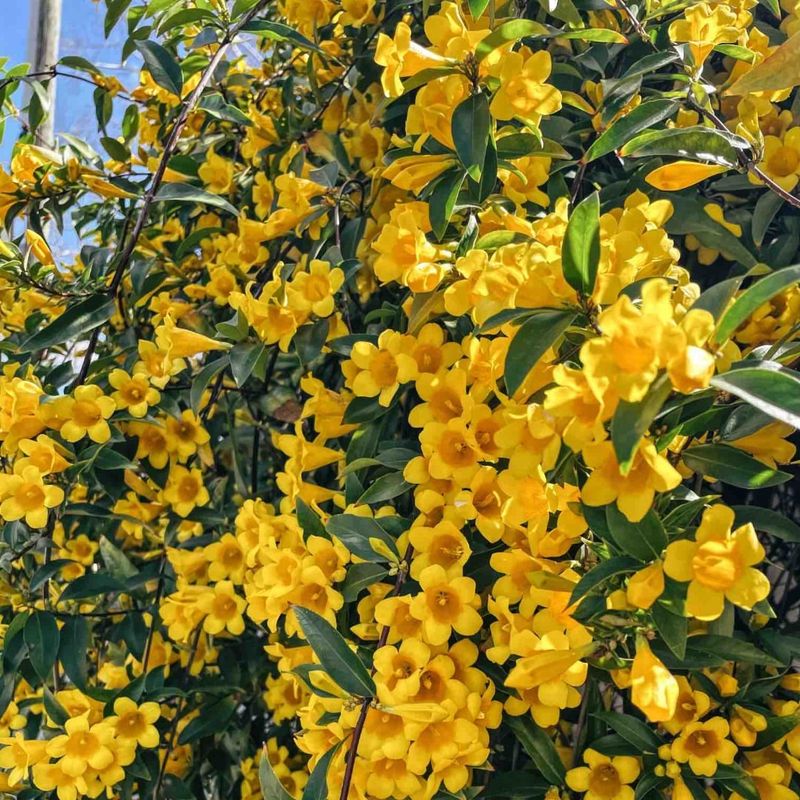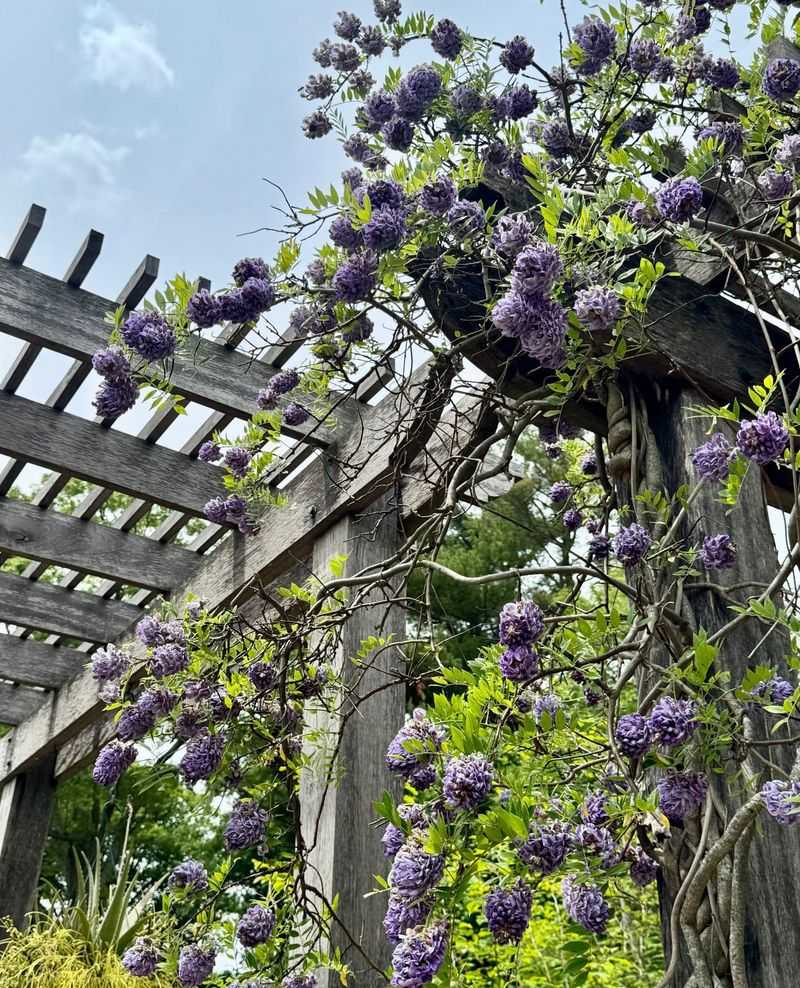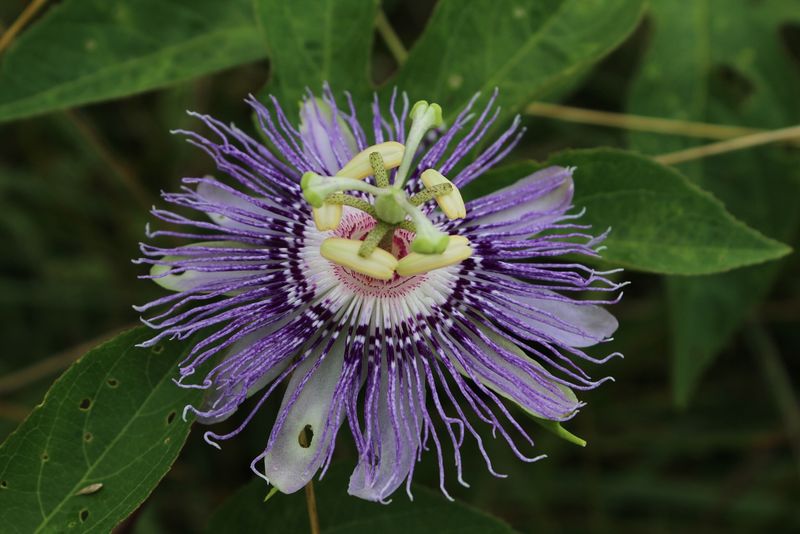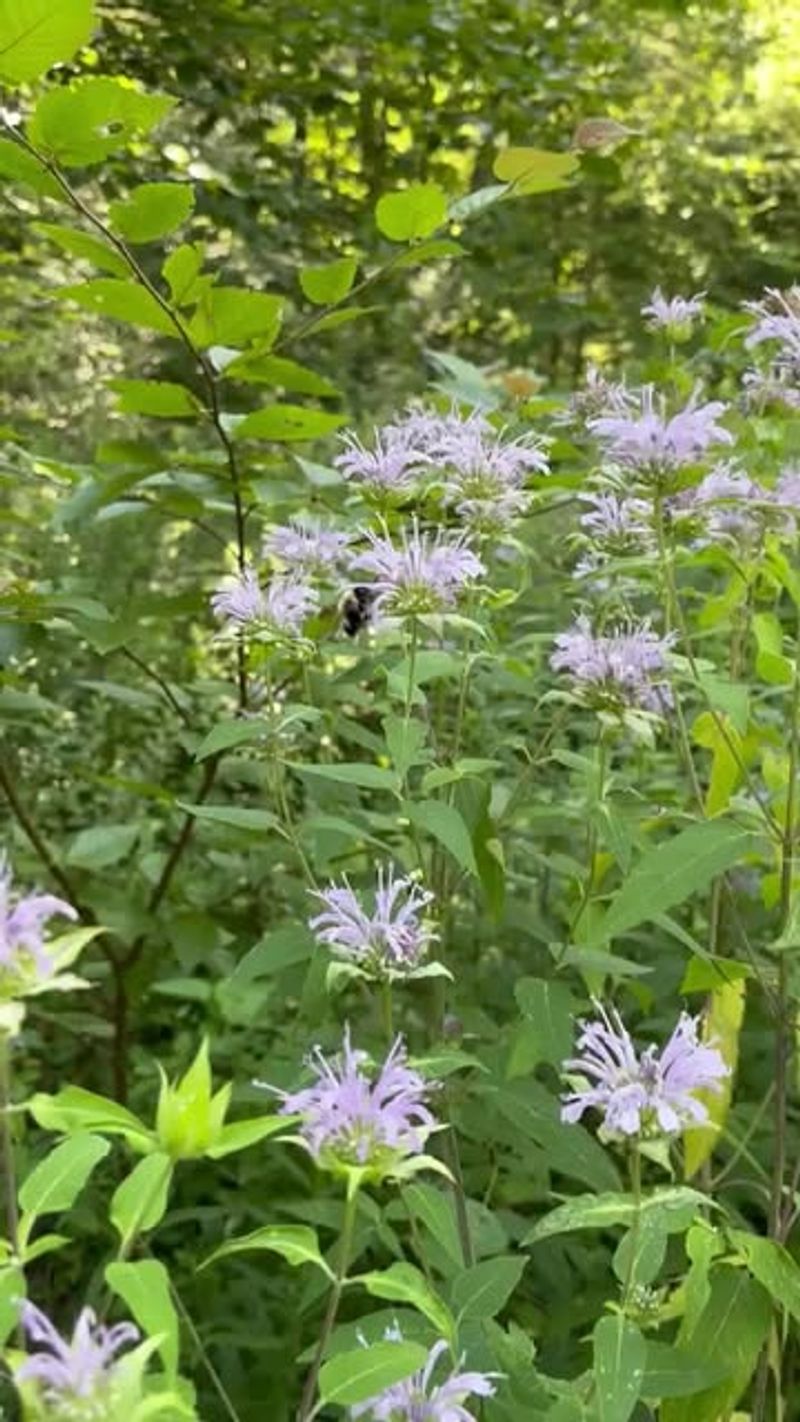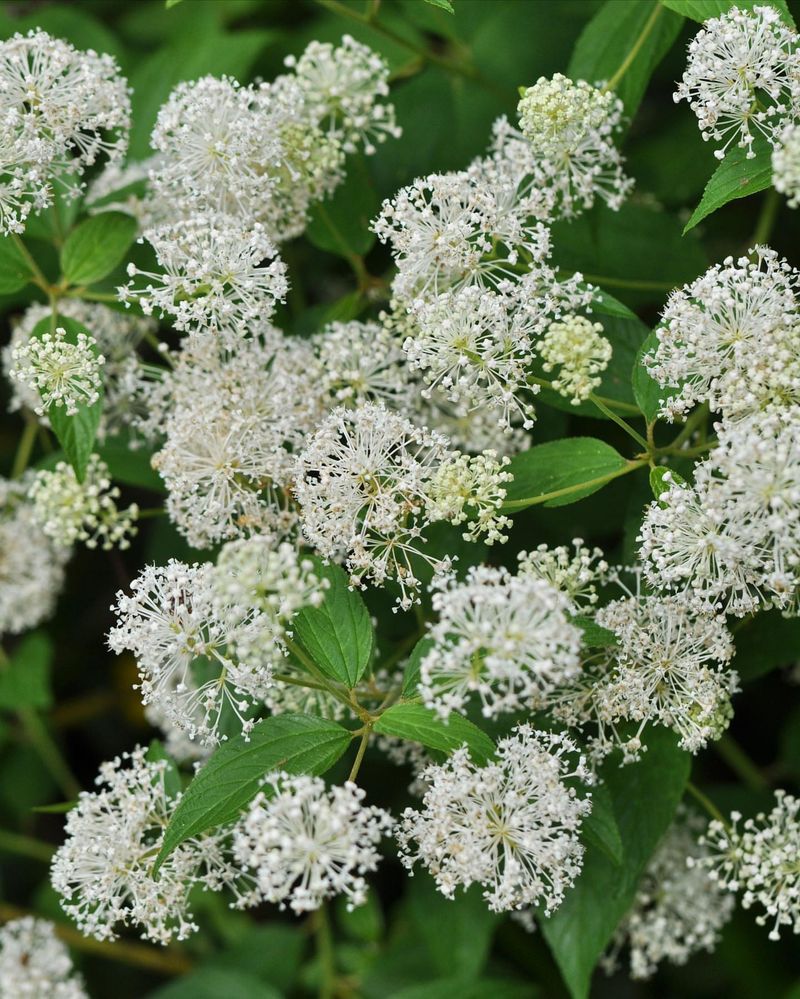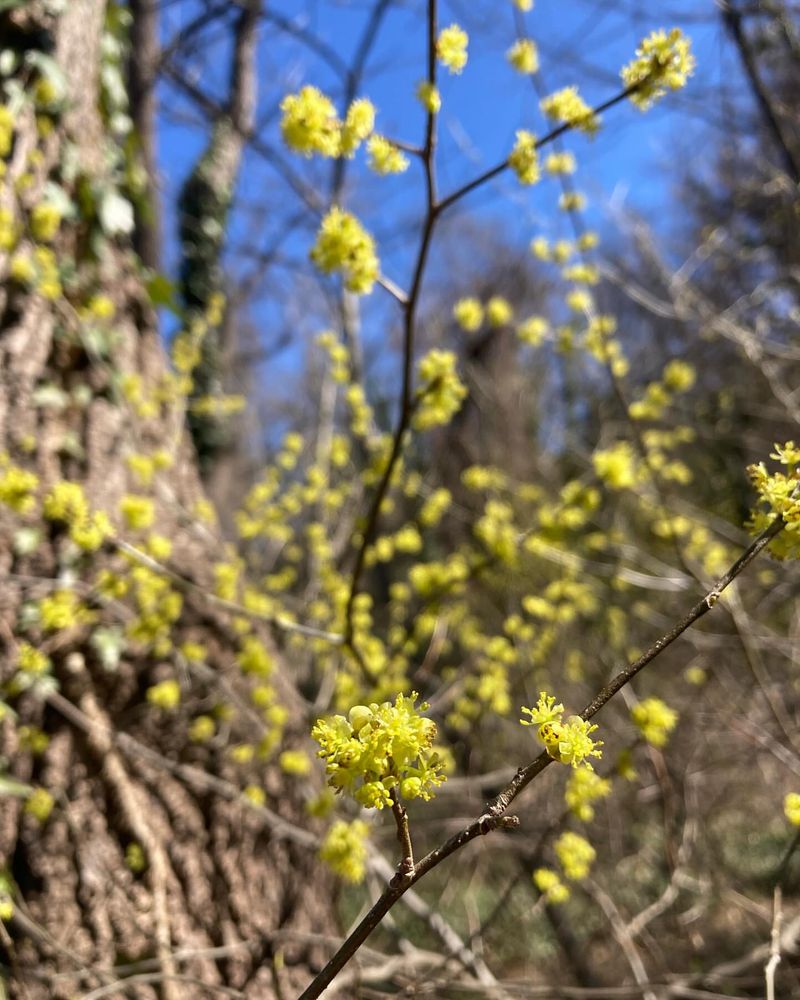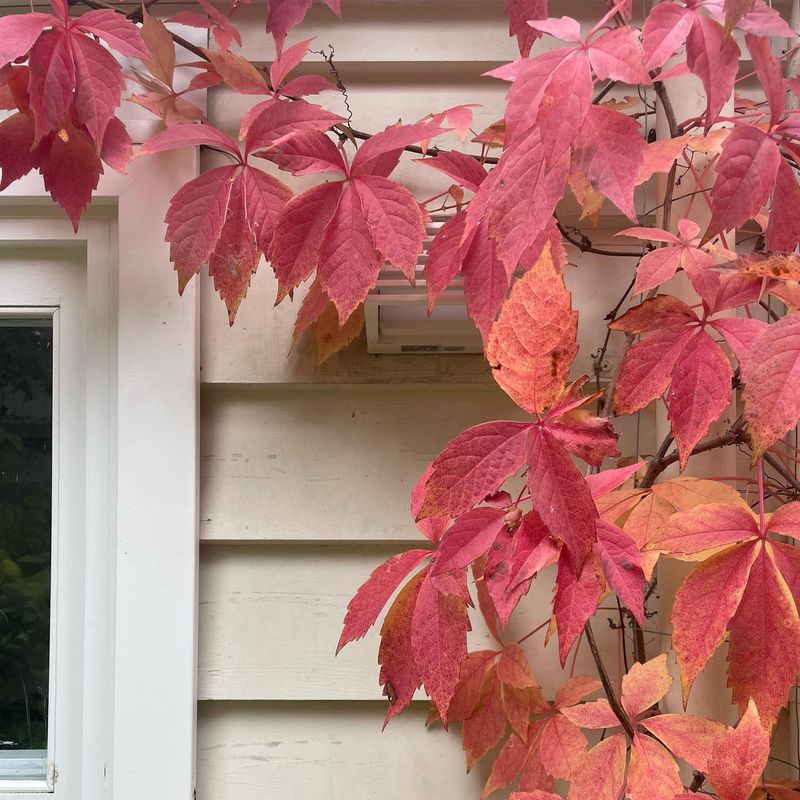While honeysuckle might seem like a great addition to your garden, many varieties are actually invasive species that can harm local ecosystems. The good news is that there are plenty of gorgeous native plants that offer the same benefits to pollinators without the ecological downsides.
Native alternatives provide essential nectar and pollen while supporting local biodiversity and requiring less maintenance in your garden.
1. Trumpet Honeysuckle (Lonicera sempervirens)
Unlike its invasive cousins, trumpet honeysuckle is actually native to eastern North America. The tubular red flowers burst with sweet nectar that hummingbirds find irresistible.
Ruby-throated hummingbirds often fight over these blooms, while butterflies and bees gather around for their share. Plant it along a fence or trellis where its climbing nature can shine.
2. Cardinal Flower (Lobelia cardinalis)
Cardinal flower stands tall with brilliant red blooms that stop traffic in late summer gardens. Growing naturally along stream banks, this striking perennial thrives in moist soils but adapts to average garden conditions too.
Hummingbirds travel miles seeking these intense scarlet spikes. The tubular flowers perfectly match a hummingbird’s bill, making them specialized pollination partners in nature’s grand design.
3. Virginia Sweetspire (Itea virginica)
Graceful arching branches draped with fragrant white flower chains make Virginia sweetspire a showstopper in early summer. The sweet vanilla scent wafts through the garden, drawing in butterflies and native bees from surprising distances.
Fall brings an extra bonus when the leaves transform into brilliant burgundy hues. Adaptable to both sun and shade, this shrub performs beautifully in spots where other plants struggle.
4. Coral Honeysuckle (Lonicera sempervirens ‘Major Wheeler’)
Major Wheeler is a spectacular cultivar of our native coral honeysuckle with improved flowering and disease resistance. The coral-red blooms appear in abundance from spring through fall without a pause.
Hummingbirds practically live at these vines during breeding season. Unlike invasive honeysuckles, this beauty plays well with neighboring plants and won’t take over your garden.
5. Buttonbush (Cephalanthus occidentalis)
Resembling quirky pincushions from outer space, buttonbush’s spherical white flowers create quite the conversation piece. Native to wetland edges across eastern North America, this shrub attracts an astonishing diversity of pollinators.
Butterflies crowd around the unique blooms, sometimes creating living bouquets with dozens feeding at once. The unusual seed heads that follow provide winter interest and food for birds.
6. Crossvine (Bignonia capreolata)
Crossvine earns its keep with spectacular trumpet-shaped orange-red flowers that appear in profusion each spring. The semi-evergreen foliage provides year-round interest, often taking on purple tints in winter.
Hummingbirds return from migration just as these blooms open, providing critical early-season nectar. Strong climbing tendrils mean this vine needs no support system – it clings directly to walls, fences, and trees.
7. Carolina Jessamine (Gelsemium sempervirens)
Golden yellow trumpets announce spring’s arrival when Carolina jessamine bursts into bloom. This graceful evergreen vine brightens woodland edges and garden fences with cheerful flowers and glossy foliage.
Early-emerging queen bumblebees depend on these blooms for their first meals after winter hibernation. Native to southeastern woodlands, Carolina jessamine grows moderately without the aggressive tendencies of invasive honeysuckles.
8. American Wisteria (Wisteria frutescens)
Forget those aggressive Asian wisterias! Our native American wisteria offers the same romantic cascades of flowers without the garden-consuming habits. The lavender-blue flower clusters dangle like grapes from sturdy vines.
Butterflies flock to these sweetly fragrant blooms in late spring. Unlike its Asian cousins that can rip gutters from houses, American wisteria behaves itself in garden settings while still providing dramatic beauty.
9. Passionflower (Passiflora incarnata)
Mother Nature went wild designing passionflower’s otherworldly blooms. The complex purple and white flowers look like something from a science fiction movie, with intricate crowns and dramatic stamens.
Gulf fritillary butterflies can’t resist laying eggs on this vine – it’s their caterpillars’ only food source. The unusual edible fruits that follow the flowers (maypops) have a tropical flavor reminiscent of guava.
10. Wild Bergamot (Monarda fistulosa)
Lavender pom-pom flowers crown wild bergamot’s aromatic stems, creating an irresistible buffet for bees and butterflies. The minty-oregano scent fills the garden when brushed against or after summer rain.
Native bees practically wrestle for position on these nectar-rich blooms. Drought-tolerant and deer-resistant, wild bergamot thrives where many other perennials struggle, making it perfect for challenging garden spots.
11. New Jersey Tea (Ceanothus americanus)
Revolutionary War soldiers once brewed this shrub’s leaves when British tea wasn’t available – hence its patriotic name. The frothy white flower clusters create a cloud-like effect in woodland gardens.
Small native bees go crazy for these blooms, with sometimes dozens buzzing around a single shrub. Extremely drought-tolerant once established, New Jersey Tea thrives in poor soil where other plants fail to impress.
12. Penstemon (Penstemon digitalis)
White beardtongue creates elegant spires of tubular white flowers that hummingbirds and native bees can’t resist. The glossy green foliage forms tidy clumps that look good from spring through fall.
Watch carefully to spot bumblebees disappearing completely inside the flowers! This adaptable native thrives in both formal and naturalistic garden settings. The seed heads provide winter interest and food for goldfinches.
13. Spicebush (Lindera benzoin)
Tiny yellow flowers cover spicebush branches in early spring before the leaves emerge, creating a golden haze in woodland gardens. The aromatic leaves and twigs release a spicy-sweet fragrance when crushed – nature’s aromatherapy!
Spicebush swallowtail butterflies rely on this shrub to feed their caterpillars. In fall, female plants produce bright red berries that songbirds devour, while the foliage turns a luminous yellow.
14. Virginia Creeper (Parthenocissus quinquefolia)
Virginia creeper’s unassuming green flowers might not catch your eye, but birds and insects know better! These modest blooms develop into bluish berries that feed over 35 species of birds.
Fall brings the real show when the foliage transforms into a spectacular crimson display. This versatile vine climbs trees, walls, or spreads as a groundcover in shady spots where grass struggles.
15. Joe-Pye Weed (Eutrochium purpureum)
Rising majestically to 7 feet tall, Joe-Pye weed creates a butterfly paradise with its massive pink flower clusters. Despite its unfortunate name, this native perennial is no garden thug – it’s actually a well-behaved member of the sunflower family.
Monarch butterflies often make pit stops at these blooms during their fall migration. The vanilla-scented flowers make excellent cut arrangements and continue looking good even as they fade to seed.

